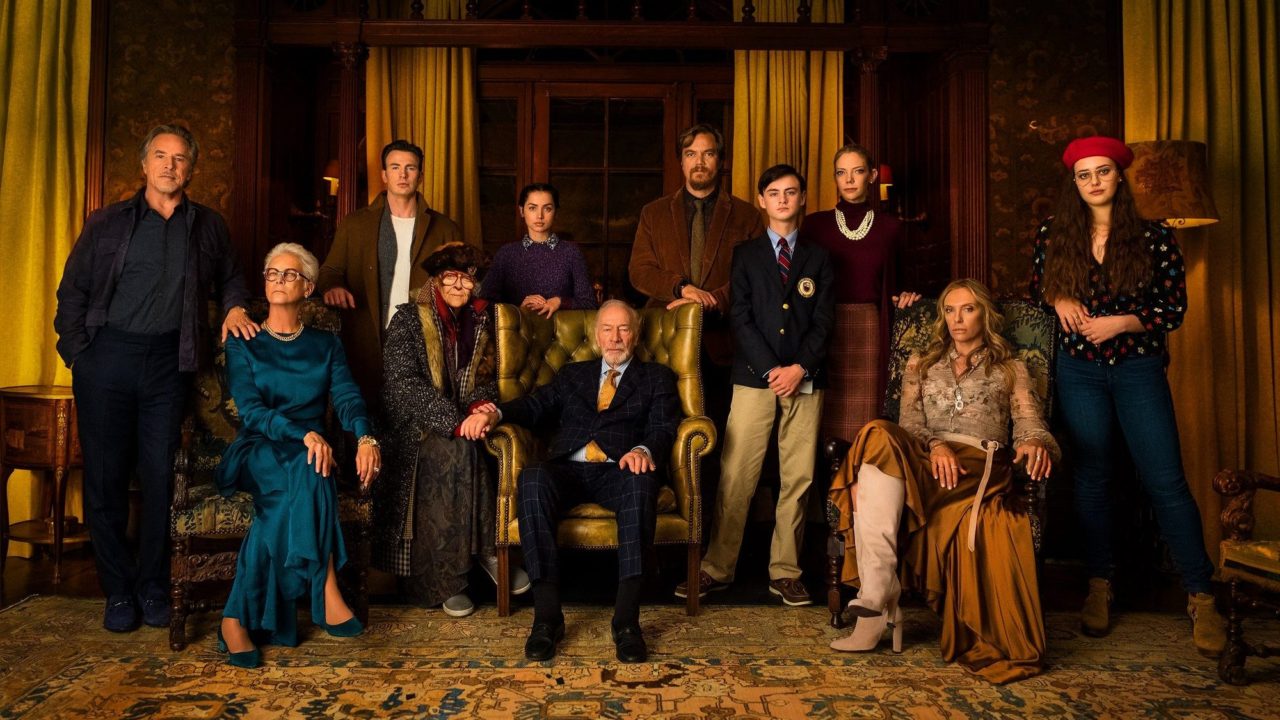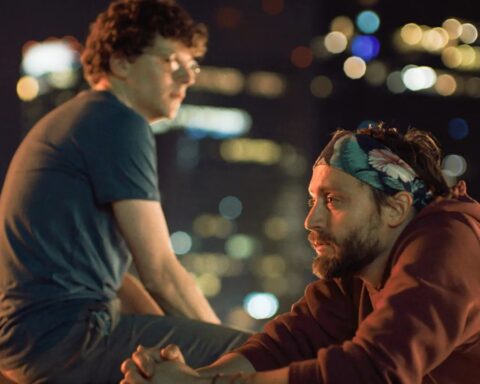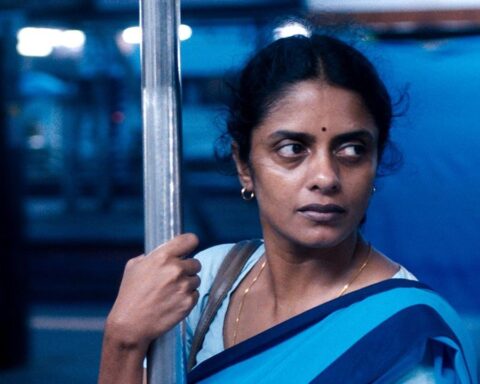When asked about the scene in Vertigo when Madeleine mysteriously, and rather improbably, disappears from the McKittrick Hotel, Alfred Hitchcock simply responded by calling it an “icebox” scene; one that “hits you after you’ve gone home and start pulling cold chicken out of the icebox.” A skilled filmmaker can make us forget about these narrative inconsistencies when we’re watching a movie. We’re so enthralled by the ride, that we don’t question where we’re going or how we’re getting there.
Murder mysteries are full of these kinds of little cheats. Some are necessary to make the reveal work. Some are just plain lazy. I’ve spent the better part of a week trying to dissect Knives Out and I can tell you this, besides being an absolutely joyous experience at the cinema, it is also one of the most internally consistent murder mysteries I have ever seen. It is absolutely immaculate.
More on that in a bit.
But first, I should tell you that Harlan Thrombey is dead. The morning after his 85th birthday, the acclaimed mystery-novel writer is found in the attic above his home, his throat slit, the knife in his hand. To the police, it appears to be a clear-cut case of suicide. To the great Benoit Blanc, however, nothing is as it seems.

So begins Rian Johnson’s razor-sharp take on the locked-room murder mystery. All the classic elements are there – a recently deceased patriarch with a massive bequest, a family full of money-grubbing children, a nurse with a heart of gold, a policeman who is willing to have the movie explained to him by a great detective, and, of course, the great detective.
Even the knives in Knives Out are right there. Both metaphorically and manifestly. They appear in the form of Harlan himself, who is finally trying to teach his mollycoddled children some accountability. They appear as sniping siblings, each with their own secrets and lies. And more obviously, they appear in Harlan’s study, in the form of a chair, behind which are a menacing collection of daggers that would likely make any occupant of the Iron Throne cower in fear.
Now, there are two well-worn tricks when it comes to making these sorts of movies. The first one involves the actors. You stack the deck. You fill the cast with so many known performers and A-listers that the audience, so distracted by who the players are, are unable to figure out whodunnit. (See: Murder on the Orient Express – both 1974 and 2017, Clue, Gosford Park, Murder by Death, etc.)
The second trick takes advantage of how these stories are told. By the time the detective has you in the parlour, by the time he says: “I suppose you’re all wondering why I’ve gathered you here…”, you’re ready to believe everything he’s got to say. By this point in the narrative, you’re already worn to a frazzle by lies, and doublespeak, and red herrings, that you’re just waiting for that sudden, sharp sforzando of dissonance that’s designed to make you jump clean out of your seat.
Rian Johnson crams all of these tricks and themes into his movie. He is so well versed in the genre that he masterfully manipulates each of these elements, gently bending them at first, with sly references and loving homages, before eventually breaking them altogether. He finds a way to make every one of these clapped out tropes surprising again.
It is to this end that he utilizes his cast in spectacular fashion. Jamie Lee Curtis is an absolute scream, Don Johnson is roguishly menacing, and Michael Shannon is meek yet manipulative. Daniel Craig, freed from the shackles of suave that come with playing Bond, seems to be having the most fun as the fabulously drawling Benoit Blanc. (Now that Craig has officially retired as James Bond, can we please have more Benoit Blanc mysteries? Pretty please?)

At the heart of this movie, however, is Ana de Armas. She is pitch perfect as the outsider, the foreign nurse who is “practically family”, at least until Harlan dies, after which she is casually referred to as “the help”. She is earnest and decent. She also stands in for many of the political tensions that underline the narrative. There is a running joke in which the Thrombey’s can’t quite figure out which country she’s from. Brazil? Paraguay? Or was it Uruguay?
What’s incredible in how each of these characters is written is how they take turns at being both vulnerable and menacing, denying you any chance at thinking that you’ve got things figured out.

In 1944, Raymond Chandler, the author of The Big Sleep and The Long Goodbye, wrote an essay in The Atlantic called The Simple Art of Murder. In it, he takes down the English murder mystery, he takes out Sherlock Holmes (referring to him as “mostly an attitude and a few unforgettable lines of dialogue”), and, after providing a convincing critique of the genre, offers us the following conclusion: “There is a very simple statement to be made about all of these stories: they do not come off intellectually as problems, and they do not come off artistically as fiction.”
With Knives Out, Rian Johnson has crafted a work that is as appealing intellectually as it is artistically (you will delight in what production designer David Crank has done with Harlan’s Clue-like mansion) and worthy of the cinematic and literary canon upon which it draws inspiration.
What’s more, with his final shot, a picture-perfect metaphor for our Trumpian times, Rian Johnson, in true Chandleresque fashion, reminds us that murder is the ultimate cruelty and that violence has lasting consequences. Even after the crime is solved and the killer brought to justice, things don’t just return to normal, and order can never just simply be restored. Not in life. And not in society.
Knives Out
130 minutes
Director: Rian Johnson
Writer: Rian Johnson
Cast: Daniel Craig, Chris Evans, Ana de Armas, Jamie Lee Curtis, Michael Shannon, Don Johnson, Toni Collette, Lakeith Stanfield, Katherine Langford, Jaeden Martell, and Christopher Plummer.









Follow Us